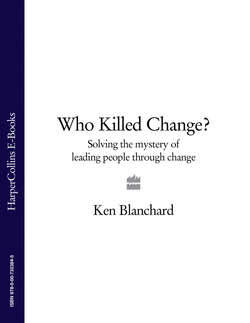Читать книгу Who Killed Change?: Solving the Mystery of Leading People Through Change - Ken Blanchard - Страница 8
ОглавлениеReflections on Culture and Commitment
TAKING a break from the interviews, McNally stepped outside the office, lit a cigar and thought about what he had learned from Culture and Commitment. He wrote in his notebook some ideas about what he’d learned.
CULTURE
While Culture could readily recite the formal organizational values that were displayed on posters throughout the organization, she wasn’t really in tune:
She did not understand the real values of the organization—the predominant attitudes, beliefs and behavior patterns that characterized the organization.
When there is a disconnect between stated values and the way an organization actually operates, the values posted on the wall are disregarded. Employees become skeptical, even cynical, about leaders who say one thing and do another. The real culture and values always speak louder than the stated ones. Change would have been better off spending his time trying to understand and align himself with the real culture and values of ACME than seeking advice from Culture.
COMMITMENT
Commitment is an interesting character:
He knows that people are more likely to buy in to a decision that they’ve influenced than a decision imposed on them by others. He also knows that uncovering the predictable concerns people have in the face of Change allows the concerns to be addressed, increasing both trust and buy-in.
Despite his passion, Commitment was not able to convince the leaders of the organization to act on his knowledge. As a result, the people left out of influencing Change reminded the leaders that they could derail or even kill him.
Were Culture and Commitment viable suspects? At this point in the investigation, McNally didn’t know. He had more questions than answers.
Did Change understand Culture well enough to align with her or try to change her?
Did the senior leaders understand that while it is true that decisions can be made faster when fewer people are involved, such decisions do not usually translate into faster, better or more sustainable integration of Change because there’s no Commitment without involvement?
Did those leaders who knew a lot about Culture and Commitment do everything they could to help Change become a real part of the organization?
